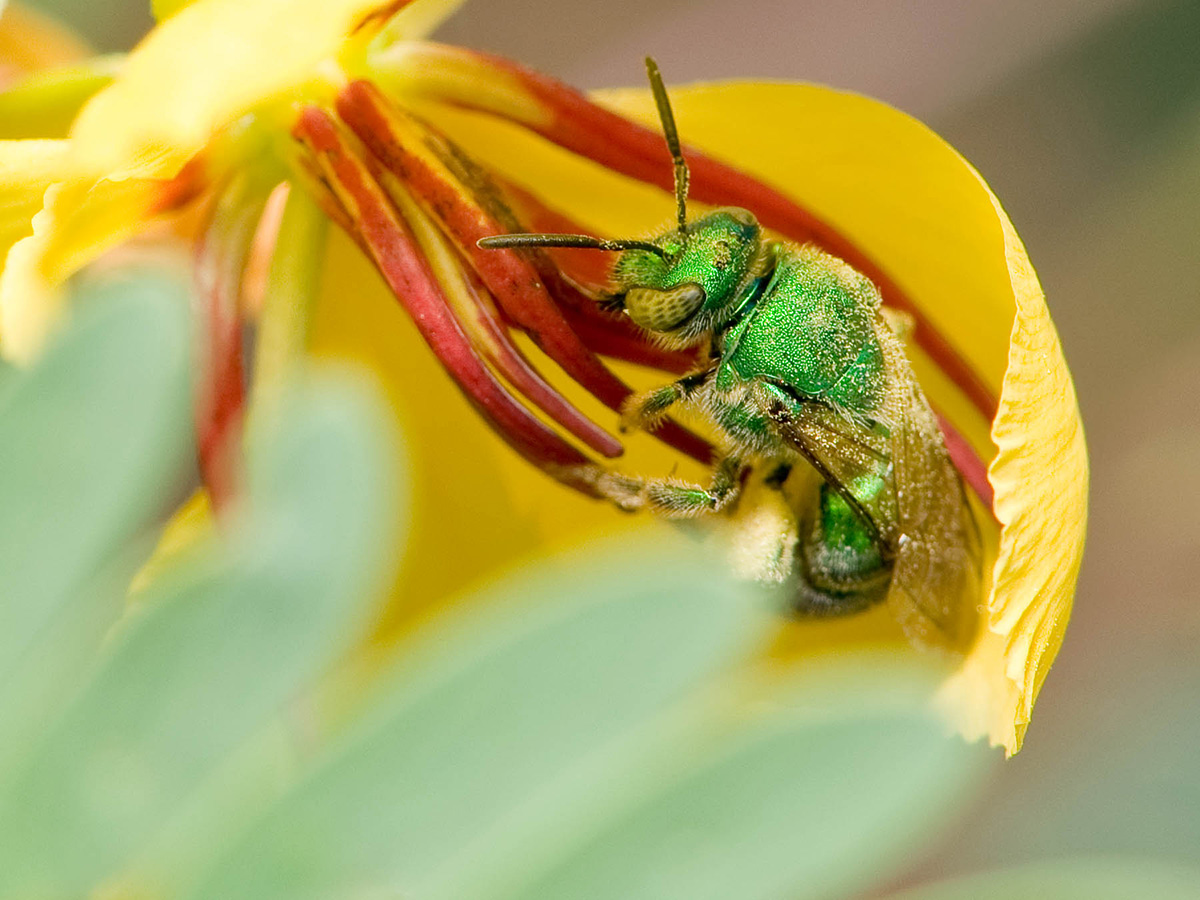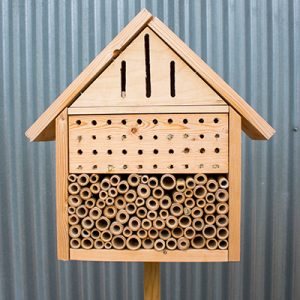The Bees’ Needs

Sweat bee on flowering partridge pea. PHOTO Wildflower Center
European honeybees get a lot of love, and for good reason: They produce sweet, delicious honey. But there are thousands of species of equally fascinating and important North American native bees in dire need of our support. This may seem obvious, but prior to the arrival of Europeans and their hives of honeybees, North America’s native bees did all of the bee-related pollination on the continent. Sadly, many of these bees are disappearing (for all of the oft-cited reasons: development, climate change, pesticide use and so on).
Yet let’s not lose hope, because it’s pretty easy to support our native bees, even in very urban environments. You too can have a garden filled with iridescent, jewel-colored bees; tiny, shiny, green bees looking waxed and buffed like a new car; big, bumbling, fat, fuzzy, black-and-yellow bees; and giant, dark bluish-purple bees shaped like winged bullets.
Here’s how to support bees in three easy steps:
1. GET A BOX OF HOLES

Adding a bee box like this one to your garden provides a place for these important pollinators to nest.
PHOTO Brianna Casselman
There are many species of solitary native bees that nest in holes in wood. Females wiggle their way down into the hole, lay an egg, stuff the hole with pollen, seal it, and leave the larva there to hatch, grow and become an adult. (Cool side story: There are native cuckoo bees that parasitize these bees by sneaking in and laying their eggs in the holes provisioned by the other bee.)
To see all of this play out in your yard, make a bee box. All you need is a thick hunk of untreated wood and drill bits of various sizes. Once built, hang your box in a protected place a few feet off the ground and facing the morning sun. For specific ideas, the Xerces Society is a great resource.
You can also buy a premade bee box. There are a lot of companies that now sell insect hotels and bee boxes online. That’s a good way to go if you don’t want to build your own, and some of them are quite stylish.
2. OPEN UP SOME BARE GROUND
Ground-nesting bees need bare soil to excavate their little holes. Just like solitary wood nesters, most of these bees lay their eggs in the ground and basically fly away. Bumblebees are a different story: A queen bumbler will generally look for an old rodent hole or some other premade cavity and start a colony filled with sister bees that care for each other. Bumblebees are extremely good pollinators (we wouldn’t have the tomato industry as we know it without them).
Find a spot or three in your garden and clear away the mulch and leaf litter. It might not result in bees right away, but keep at it. You never know when a momma bee will decide that your little patch of bare soil is the perfect spot to start a family.
3. PLANT GOOD BEE PLANTS
Every region in North America has native plants that provide nectar and pollen to a wide variety of native bees. Visit our Native Plants of North America database for plant lists and check with your local native plant society or nursery. In Central Texas, the following plants are often covered with native (and honey) bees:

FROM LEFT Kidneywood (Eysenhardtia texana), Fall aster (Symphyotrichum oblongifolium), Mealy blue sage (Salvia farinacea) and Partridge pea (Chamaecrista fasciculata) PHOTOS Melody Lytle, Wildflower Center, Ray Mathews, Wildflower Center
As with all gardening, start small. Plant a few bee-friendly plants; stop using pesticides in your landscape; and leave some bare ground. Then, mount a few bee boxes around your space. Even a balcony in the right location could work. You’ll be amazed at how quickly the bees buzz in.

